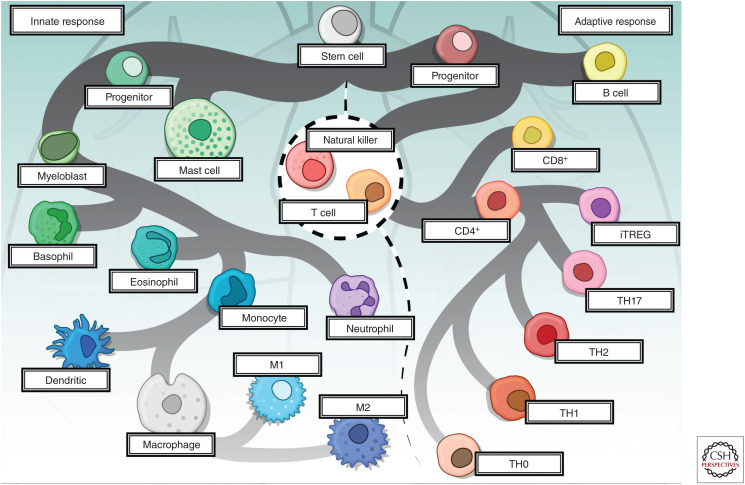Figure 1.
The cellular mediators of the innate and adaptive immune response. Hematopoietic stem cells differentiate into lymphoid and myeloid progenitors that further branch out into specific cell types mediating innate and adaptive immune response. Cells of the innate immune system provide initial response against non-self antigens, while adaptive immune response is highly specific and is mediated by the activation of lymphocytes. The cellular components of innate immunity include mast cells, basophils, eosinophils, and phagocytic cells, including dendritic cells, macrophages, and neutrophils. Soluble molecules, including complement, acute phase proteins, chemokines, and cytokines make up the humoral component of innate immunity. The cellular components of adaptive immunity include T lymphocytes (CD8+ and CD4+ [TH1, TH2, TH17, and iTREG]), B lymphocytes, and natural killer (NK) cells while immunoglobulins, chemokines, and cytokines make up the humoral component of the adaptive immune system. NK cells, neutrophils, and iTREG cell subsets overlap between both arms of immune responses. (CD) Cluster of differentiation, (TH) T helper cells, (iTREG) induced T regulatory cells.

